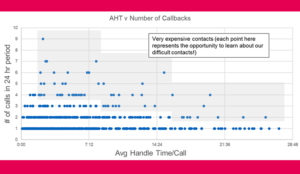New research shows us how to eliminate conflicts and increase productivity in the workplace. The key is understanding the different types of employee work styles in the office to build trust and respect.
Have you ever wondered why some workers show up at the office promptly at 7 a.m., while others shuffle in at 9 every day?
Or why some are quick to organize a meeting when others prefer to resolve the issue with just an email or two?
The answer is work preferences.
It’s no secret that different employees approach their work-related tasks in different ways. In fact, we have identified four primary work styles among workers. They are outlined in a whitepaper that highlights these differing styles and explains how this understanding can help you create a more productive and harmonious work environment.
The four workstyles, and a few of their key attributes, include:
- Game Changers (18% of the working population) are always on the move, applying energy and devising bold solutions to challenges.
- Gurus (31% of workers) inspire, create new knowledge and share different perspectives and insights.
- Geniuses (28% of workers) keep their cool, stick to the facts and always know where to find vital information or knowledge to get to the next level.
- Guardians (23% of workers) possess outstanding project and people skills and prefer meetings for getting everybody on the same page.
Every organization requires employees with each of these work styles. Just as no professional sports team would take to the field with all of its players at the same position, our varying work styles complement the styles, skills and abilities of each other, helping us forge a strong, flexible and adaptable organization.
Sowing the Seeds of Conflict
But while diverse work styles are important to a successful organization, they also have the potential to generate conflict in the workplace. This discord often shows up in the many gripes we commonly hear, such as “Why does she keep sending these emails late at night?” and “He is always in meetings; I don’t understand how he gets any work done!” and many others.
How do we prevent this conflict? By understanding and appreciating the different work styles among us. You can learn yours by taking the Jabra Work Potential Test and having your coworkers do the same. The test is just 20 questions and takes less than 5 minutes to complete, and you will learn how you and your coworkers prefer to organize your workdays and address the challenges you face in the workplace.
You will soon begin to appreciate the similarities and differences between work styles, beginning with how people with different styles perceive the act of work itself. Sure, employees across all four work styles are committed to accomplishing their job duties, but it is important to note that their approaches often tend to be quite different. Gurus and Game Changers, for instance, are proactive in their approach to work, view it as a continuous learning process and often seek out new tasks on their own. On the other hand, Guardians and Geniuses tend to be more reactive in their approach to their jobs. They see work as undertaking the tasks that are given to them.
Similarly, you’ll discover when and how people with differing work styles prefer to do their work and when they tend to be most productive. Employees who drift into the office at their leisure are likely to be Gurus or Game Changers, because they demand flexibility in when they perform their job tasks. The ones who scratch their heads at why these two types do so (and how they get away with it) are likely to be Guardians or Geniuses, because they prefer that their time be well-structured.
You’ll also identify which work types are most productive while sitting in front of a computer compared with those who feel most productive in meetings, and which do their best concentration during the morning, compared with others who prefer afternoons and still others who concentrate best during evenings.
By understanding the four types of work styles, we can eliminate mistrust and conflict in the workplace and, ultimately, collaborate more effectively with our coworkers.
Author: Guest Author
Published On: 8th Dec 2016 - Last modified: 30th Sep 2022
Read more about - Guest Blogs, Jabra





































